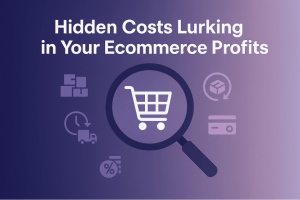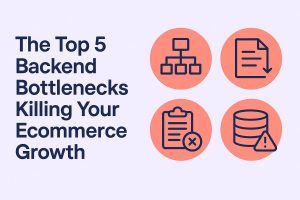As we step into 2024, the ecommerce landscape continues to shift rapidly. Staying ahead in this dynamic environment calls for a keen understanding of emerging trends and a clear strategy to sidestep potential pitfalls. Here’s a professional guide to not only survive but thrive in ecommerce this year.
Embracing the Next Trends
Global Marketplace Expansion
In 2024, reaching out to a global audience is no longer a luxury—it’s a necessity. Businesses are expanding their operations across borders, leveraging international marketplaces to tap into new customer bases. To adapt, ensure your ecommerce platform can handle multiple languages and currencies, and is optimized for international shipping and logistics.
Sustainability
Consumer awareness around sustainability has surged, and eco-friendly products are no longer just a niche market. Implement sustainable practices in your operations, from sourcing materials responsibly to using eco-friendly packaging. This not only resonates with customers but also helps in reducing the carbon footprint.
Accessibility of AI and Machine Learning

AI and machine learning are now more accessible than ever. These technologies can be used to personalize shopping experiences, forecast trends, manage inventory, and much more. Integrating AI can streamline operations, enhance customer experiences, and provide insightful data analytics.
Mobile Shopping
Mobile commerce is dominating the digital shopping space. A mobile-first approach with a responsive design and an intuitive user interface is crucial. Ensure your website and checkout process are optimized for mobile devices to capture this ever-growing segment of the market.
Visual Technologies
The integration of video, AR, and VR is transforming the shopping experience. These tools help customers make informed decisions by providing a more immersive view of products. Investing in these technologies can significantly enhance customer engagement and satisfaction.
Traps to Avoid
Mobile Optimization Ignorance
With the dominance of mobile shopping, neglecting mobile optimization can be fatal. Ensure your site is mobile-friendly with fast load times, easy navigation, and a secure, streamlined checkout process.
Overcomplicating Checkout
A complicated checkout process is one of the top reasons for cart abandonment. Simplify the process, offer multiple payment options, and ensure transparency in pricing and shipping costs.
Lack of Product Personalization
Consumers expect a tailored experience. Use data analytics and AI to offer personalized recommendations and ensure your product offerings align with customer preferences.
Inventory Mismanagement
Accurate inventory management is critical. Real-time tracking and predictive analytics can prevent stockouts and overstocking, enhancing customer satisfaction and optimizing storage costs.
Data-Driven Decisions Avoidance
Ecommerce is driven by data. Avoid making decisions based on intuition alone. Leverage data for marketing strategies, customer engagement, and inventory management to make informed decisions that align with market demands.
Consequences of Mistakes
Loss of Revenue
A poor mobile experience or a complex checkout process can deter customers, leading to a direct hit on sales. Ensure your mobile platform is robust and the buying process is seamless.
Customer Frustration
Customers expect a personalized and hassle-free shopping experience. Failing to offer this can result in frustration, negative reviews, and a decline in brand loyalty.
Missed Opportunities
Not leveraging AI, machine learning, or new visual technologies means missing out on opportunities to connect with customers and streamline operations. Keep abreast of technological advancements to stay competitive.
In conclusion, 2024 is a year of significant opportunities in ecommerce, but it comes with its share of challenges. By embracing global trends, prioritizing sustainability and technological integration, and optimizing the mobile shopping experience, businesses can set themselves up for success. Avoid the traps of neglecting mobile optimization, overcomplicating processes, and undervaluing data analytics. Remember, the key to ecommerce prosperity lies in agility and the ability to anticipate and adapt to the changing digital landscape. You can find a list of integration platforms to help make your e-commerce journey smoother on Shopify and Prestashop.
We offer free support for all your e-commerce integration questions, don’t hesitate to reach out to [email protected]





